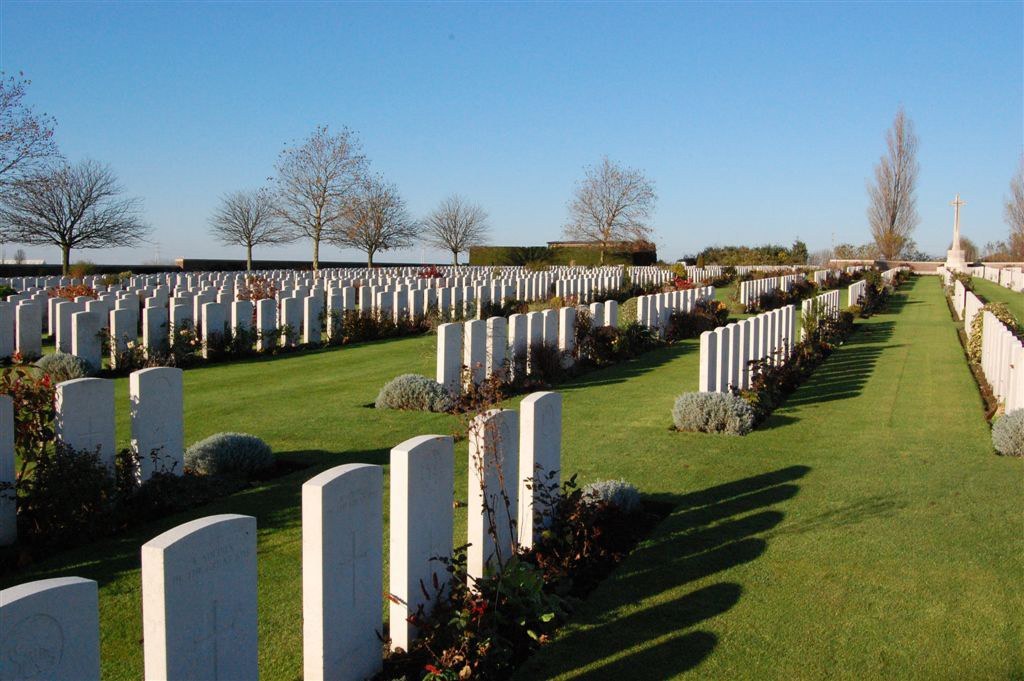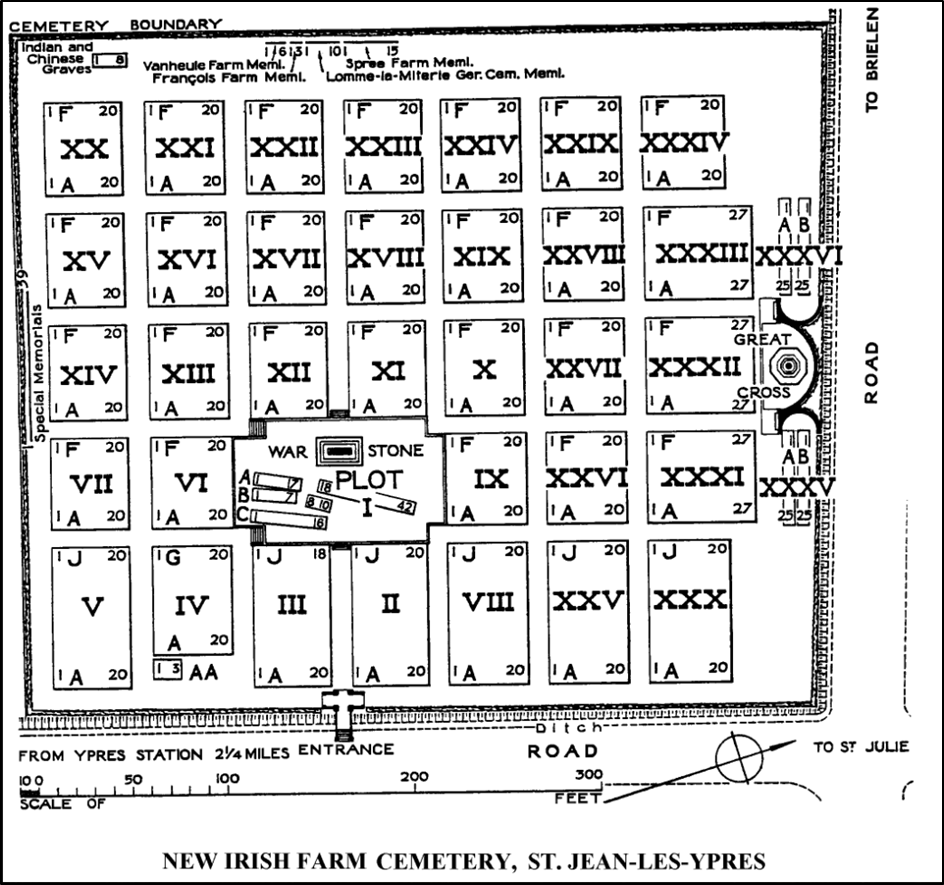ALBERT MILLS
Lance Corporal 17879, 12th Royal Sussex Regiment
Killed in Action at the Battle of St Julien, 31 July 1917, aged 20
Buried at New Irish Farm Cemetery, St. Jean-les-Ypres, Belgium
Plot IX, Row F, Grave 18

New Irish Farm Cemetery, St. Jean-les-Ypres, West Flanders, Belgium
Source: Commonwealth War Graves Commission
Click to enlarge
Albert Mills was baptised on 27 June 1897 in East Grinstead, the son of James Mills and his wife Sarah Ann (née Coomber). The family — consisting of builder's foreman James, Sarah Ann, James junior, Minnie, Arthur, Albert, Nellie and Stanley — were all born in East Grinstead but were enumerated in 1911 at Highgate in Forest Row. An older daughter, Edith, had married by this time. Ten years earlier, the family was living in Glen Vue Road in East Grinstead, and a second daughter, Alice, was still at home; James was then a bricklayer.
Albert was 13 and still at school in 1911 and must have been very young when he took the king's shilling. Unfortunately, his attestation papers have not survived, so we don't know when he joined up, but the UK Soldiers died in the Great War record on Ancestry gives his place of enlistment as Horsham, and his rank as Lance Corporal, which suggests he must have served for a reasonable length of time. However, original members of the 12th Battalion who signed up in November 1914 were given the prefix SD for South Downs on their regimental numbers, so Albert must have been a later recruit. In all probability, though, by the time the battalion crossed to France, landing at Le Havre in March 1916, Albert would have been part of it.
He was listed as 'Wounded' on the War Office's Casualty List issued on 23 October 1916. A note on the Forces War Records site states:
This man Is entitled to wear the 'Wounded Stripe' As authorised under Army Order 204 of 6 July 1916. The terms of this award being met by their naming in this list.
The same source lists him as a Private.
The information on the Graves Registration Report Form possibly muddies the water further, as Mills is recorded there too as a private, not a lance corporal. It also gives his regimental number as 2335, but with a hand-written note saying 'old' in front of this and a superscription noting his new number as G/17879.
The Forest Row Memorial Book, which gives him the rank of Lance Corporal, records information given by his father James (living after the war at Felbridge Park) and says that Albert was killed in France. Maybe his father's command of geography was not strong, as the Battle of St Julien was fought to release the Flanders village of St Juliaan, north-east of Ypres, from the Germans - who had held it since 1916. The World War One Battlefields website suggests the village was taken on 31 July 1917 — the day of Albert's death — by the 13th Battalion of the Royal Sussex Regiment, but both the War Memorial Book and Commonwealth War Graves Commission place Mills in the 12th. Other sources suggest the 11th, 12th and 13th battalions were almost seen as an entity, which may be the reason for the confusion. Certainly, when the 12th battalion ceased to exist in February 1918, some of its surviving members were used to reinforce the 11th and 13th. The Battle of St Julien took place on the first day of the much longer Third Battle of Ypres.
The Forces War Records website describes the action at St Juliaan as The Battle of Pilckem Ridge, an allied victory on the first day of the Third Battle of Ypres. Although early allied momentum was later slowed by heavy rain and determined counter-attacks, Pilckem Ridge, Bellewaarde Ridge and German observation posts on the Gheluveld Plateau were taken, but at the cost of almost 32,000 casualties.
Albert was buried in West Vlaanderen in Belgium, not far from Ypres, one of 1,450 casualties interred at New Irish Farm Cemetery, Sint Jan. This cemetery, named after a nearby farm, was opened at the outbreak of the 3rd Battle of Ypres, also known as Passchendaele, on land that had until the beginning of 1917 been the front line.
Albert's oldest brother James Mills joined the Territorial Army in 1910, attesting his willingness to be part of the Royal Sussex 4th Battalion. He was discharged in February 1916 having completed his five year term and been awarded the 1914 and 15 Star and the British War and Victory medals. In his initial attestation he gave the name of the family home at Highgate as Oakfield Cottages.
The two other brothers, Arthur and Stanley, have left no record of their war service, but appear to have lived to a ripe old age.

New Irish Farm Cemetery, St. Jean-les-Ypres
Click to enlarge
Pam Griffiths
25 October 2017
Updated 6 September 2019 & 8 January 2022

